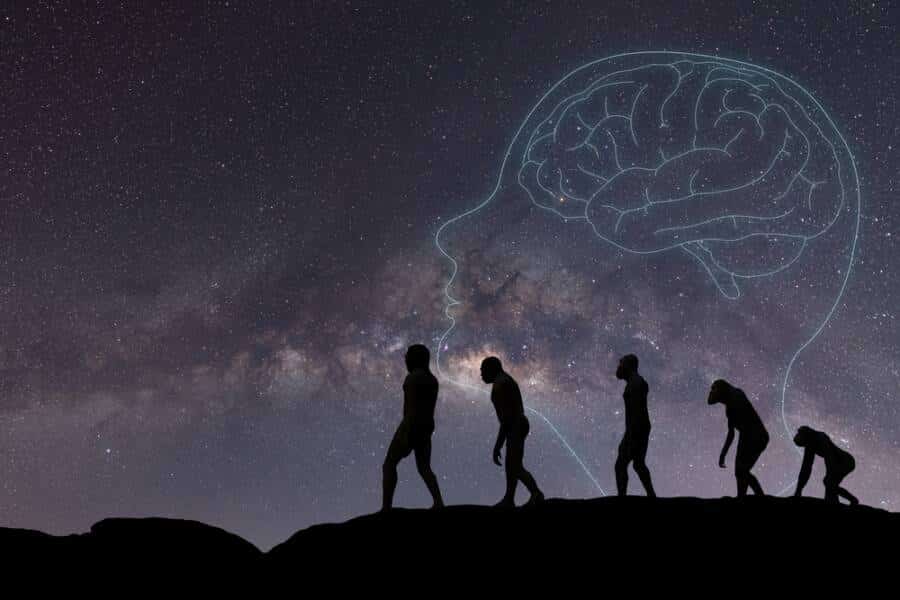The history lesson you were never taught
Humans have existed for approximately 2.5 million years, according to scientists. But how much do we truly know about ourselves, Homo sapiens?
If we were to travel back for a few seconds to East Africa around 2 million years ago, we might observe scenes quite similar to those of today. Whole families eating, children playing on green grass, and elderly individuals seeking separate spaces for rest and tranquillity.
Yes, the needs and habits of humans haven’t changed much. They loved, ate, played, and competed with each other just like us. Surely, they didn’t know or possess the many things we have today, but perhaps they were happier.
None of them could have imagined that we would manipulate atoms or communicate through a smart little box without seeing each other face to face.
But before us, Homo sapiens, there were sisters and cousins of ours, albeit under different names. We all trace our lineage back to a common ancestor, as the species evolved over time.
Just as tigers, lions, jaguars, and leopards all derive from the same Panthera species, we have evolved from a shared family. And this has been one of the planet’s best-kept secrets.
It’s time to explore together 5 things you didn’t know about Homo sapiens. We will discover new insights that we haven’t learned in history class or biology lessons. Read on to find out more.

1. We’re not that special
Homo sapiens is just another member of a rather large and noisy family. You might have thought we were special and the only species different from other animals on Earth. But nothing could be further from the truth!
Like it or not, we had many sisters, brothers, and cousins too. The family is called primates or hominoids. In other words, chimpanzees, gorillas, and orangutans. Among these three, chimpanzees are the closest to us.
It turns out that about 6 million years ago, a single female ape had two daughters—one became the ancestor of all chimpanzees, while the other is our cute great-grandmother.
Indeed, we’re obsessed with the belief that we are the only special beings and that nothing compares to us. However, we, too, were once non-speaking creatures.
2. Once, there were more of us Homo
The true meaning of the word “human” actually stems from the definition of an “animal belonging to the genus Homo,” and there were many animals belonging to this species.
Humans trace their origins back to East Africa from a primate called Australopithecus, meaning “southern ape.” Two million years ago, some of these Homo beings ventured to other parts of the world, including North Africa, Asia, and even Europe.
Those who reached Europe and western Asia evolved into Homo neanderthalensis, commonly known as Neanderthals. They had a robust and muscular build, much sturdier than us sapiens. They adapted to the cold climate of Western Eurasia.
In Asia, Homo erectus developed and lived in the region for nearly two million years. What is shocking and amusing is that they were the most enduring human species that ever existed. Today, we wonder if we will survive another two thousand years, but two million?
In Indonesia, specifically on the island of Java, Homo soloensis lived and adapted to tropical life. Additionally, on the island of Flores, the people there went through a process that made them dwarfs due to their very low stature.
The year 2010 brought a fantastic discovery. We found out that we had another lost sibling, Homo denisova. In the Denisova Cave in Siberia, a fossilized phalanx was found, which, through genetic analysis, was revealed to belong to a human species.
And these are not all of them. How many other lost siblings do we have yet to discover?

3. Why do we stand upright?
Our bipedal upright position is unique among our primate ancestors as well as among our sisters, brothers, and cousins. The reason our bodies have evolved this way may have transformed over time.
One reason is that being in a bipedal position allows us to have a better view of the savanna, making it easier to spot potential threats or prey in the vicinity. Being bipedal also frees up our hands for various tasks. Whether it’s throwing stones at enemies or reaching for that juicy fruit hanging from a tree.
Given the benefits it provided, we were able to develop this upright bipedal posture. It allowed us to create useful tools for hunting and fire-starting.
Interestingly, this is also likely the reason why many people today suffer from spinal discomfort. According to scientists, this transition happened rather abruptly, and now we bear the consequences of our ancestors’ evolution.
4. Homo sapiens did not discover fire
A significant milestone in our evolution was undoubtedly the discovery of fire. However, approximately 300,000 years ago, it was used by our Homo sapiens ancestors, as well as Neanderthals and Homo erectus. It provided light, warmth, and, of course, a frightening weapon against predators like lions.
It is possible that our ancestors intentionally started fires in their surroundings because after the fire went out, they could find charred animals to consume.
But the greatest benefit of fire was cooking. Foods that humans cannot consume in their natural form, such as rice, potatoes, or wheat. While chimpanzees spend around five hours a day chewing their foraged food, humans now required no more than an hour.
Researchers argue that the advent of cooking led to the development of both our digestive system and our brain. Since the intestines and brain consume a lot of energy, the preparation of food using fire was highly beneficial.
5. Gossip was the reason for everything
Although no one knows for certain why Homo sapiens is the only species of humans that have survived, we do know for certain what our advantage over others was.
While Neanderthals were more robust than us, and Homo erectus was an older and slightly more evolved species, what they lacked was language. Researchers have concluded that our ability to speak and communicate with each other was our greatest advantage. But how did we manage to communicate? It seems that our strong desire to gossip about our companions led us to find a way.
Imagine a battle between sapiens and Neanderthals. We would have never won if we hadn’t been able to communicate and work together. Physically, we wouldn’t have stood a chance. However, sapiens‘ coordinated attacks eventually led to the extinction of the Neanderthals.
This may seem like a joke, but it supports many theories. The most concrete example to prove this is a study conducted on a group of monkeys that also communicate, but through vocalizations.
These monkeys were made to listen to recordings of another monkey’s vocalization, and those who listened would conform to the vocalization. If it was an alert call indicating danger, they became highly alert. And if the call in the recording was for aggression, they became highly agitated.
The same applies to Homo sapiens because we are social animals. Apparently, communication between a man and a woman to declare love wasn’t as important, but knowing who they hated was.
Even today, the same theory applies. Why do you think there are so many social networks where we find personal information and photos of other people? It’s to be able to talk about them.
Because science is such an interesting domain, we recommend you check out our article The Body After Death: 7 Strange Things It Can Do








